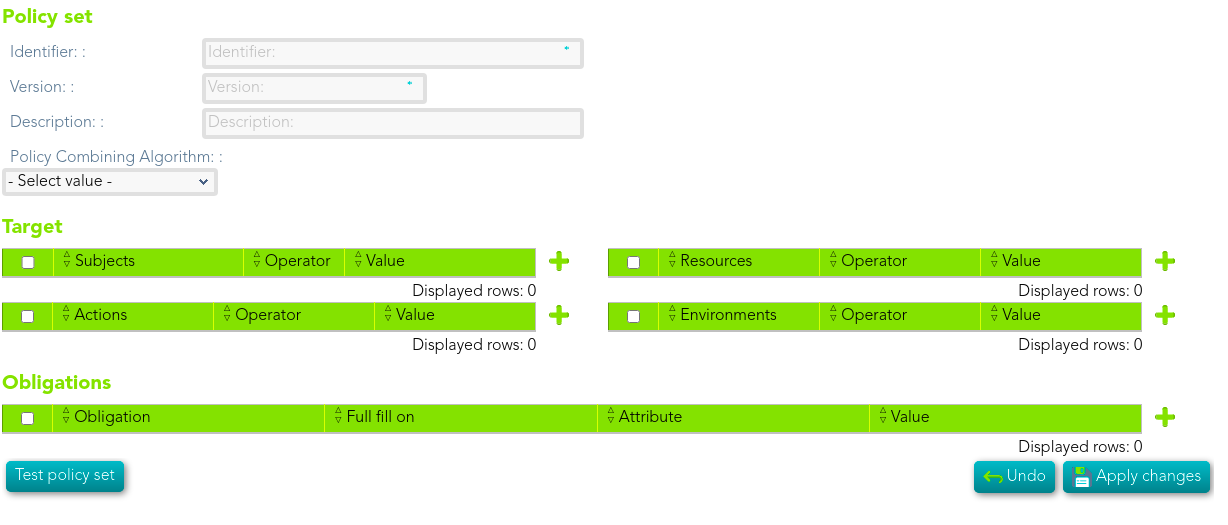Policy set
Description
A PolicySet is a container that can hold other Policies or PolicySets, as well as references to policies found in remote locations.
- Policy Combining Algorithm
- Target
- Obligations
Every PolicySet contains a target and obligations, both can be empty.
The target contains the subjects, resources, actions and environments where the policy set will be applied. A target can contain more than one subject, environment, resource or action or none of them.
Policy Set can be exported to an XML file by clicking on Export button. The file will contain the Policy Set Target and all the elements included in it, like other PolicySets, Policies or References.
It is possible to create a new version for a PolicySet by clicking on 'Add new version'. That will copy all PolicySet elements on the tree with the following version number.
Screen overview
Related objects
Standard attributes
- Identifier: identify the policy set.
- Version: version of the policy set.
- Description: brief description of the policy set.
- Policy Combining Algorithm: determines how the different Policies in the PolicySet will be applied. You can visit the XACML Rule combining algorithm page for more information.
- Target: The policy result will be MATCHES if it all the target elements defined match.
- Obligations
Actions
|
Apply changes |
Allows you to save the data of a new policy set or to update the data of a specific policy set. To save the data it will be mandatory to fill in the required fields |
|
Undo |
Allows you to quit without applying any changes. |
|
Delete |
Allows you to delete a policy set. You can choose that option on the trash icon. To perform that action, Soffid will ask you for confirmation, you could confirm or cancel the operation. |
|
Export |
Allows you to export a XML file that contain the policy set. |
|
Add new version |
Allows you to add a new versión of the policy set. |
|
Test policy set |
Allows you to test the policy set creating the XML file necessary with the defined policies and rules. |
https://www.oasis-open.org/committees/download.php/2713/Brief_Introduction_to_XACML.html

